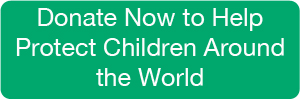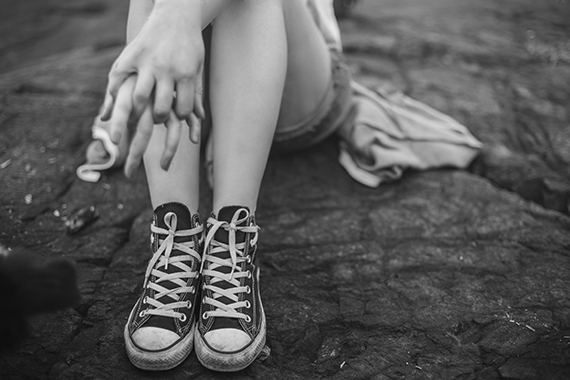The Numbers: Child Sexual Imposition in the United States
The following piece was written by World of Children Co-Founder Harry Leibowitz as part of our Child Protection Blog Carnival.
The Numbers
Let’s look at some truly horrifying numbers…
- 116,000 internet queries each day are related to child pornography.
- 300,000 or more children in the United States are forced into the commercial sex trade each year
- 68% of children trafficked into the sex trade have been in the care of social services or foster care
- 1 out of every 10 children under 18 will be the victim of sexual abuse (1 in 7 girls and 1 in 25 boys)
These numbers represent a growing plague of child sexual imposition in this country. Why are we – a society that prides itself on speaking out against atrocities around the world – allowing these numbers to stand? Why are we not doing more to protect our children and their innocence?
The full answer is no doubt incredibly complex, but I believe there are two main forces behind these numbers – our unwillingness to hear and believe they are true and the economics of the situation.
Hear No Evil, See No Evil
Childhood sexual abuse, whether in the home or on the streets, is a painful subject. We shut it up and believe that if we do not talk about it or cannot see it, it must not be happening here. Or we look at police statistics and believe they tell the whole story. In reality, most cases of child abuse go unreported, either because the child targeted as a victim is disenfranchised to begin with, and therefore not likely to have a safety net to report abuse to, or because the stigma of identifying oneself as a victim seems worse than remaining quiet.
This desire to remain quiet may seem tempting to many but in reality, it can have long-term psychological effects. An Australian study found that, “Young people who had experienced child sexual abuse had a suicide rate that was 10.7 to 13.0 times the national Australian rates… Thirty-two percent of the abused children had attempted suicide, and 43% had thought about suicide since they were sexually abused.” (http://www.ncbi.nlm.nih.gov/pubmed/11888413)
This surely shows us that a “hear no evil, see no evil” attitude does not mean that there IS no evil. It just means that we prevent ourselves from recognizing and reaching out to those that most need our help.
Supply and Demand
There is an incredible income stream available to human traffickers and pimps through the commercialization of child sexuality. There are no accurate statistics on the dollars of revenue generated by the child sex trade but it runs to the billions of dollars. Take as a proxy the internet pornography industry. It is estimated to produce $180,000 in revenue every minute. Estimates say that approximately 25-30% of this is child-related pornography. Even if we take a conservative estimate, the child internet pornography business is worth billions each year. That doesn’t even include other kinds of child sexual abuse and imposition that happen every day, some of which are incredibly profitable.
Additionally, from a purely economics standpoint, the child sex industry holds more potential profit than something like the drug trade because, while drugs are used up and must be replaced, the same child’s “services” can be sold dozens or even hundreds of times. Keeping costs low by leaving the child in inhumane conditions, without proper food, water, clothes, or medical care, makes the profit margin that much better.
We all know that where there is money to be made in this world, someone will step in to capitalize on it. Demand drives supply. As long as there are people willing to pay to abuse children, there will be someone willing to supply it and make a profit from it.
Something Must Be Done – Where Can We Start?
1) I have heard some people say that “if” this is a problem, the police will take care of it. They will not. It is so much more than something the police can handle. It is an incredibly complex issue that needs a complex, multi-stakeholder response.
2) Efforts to curb the supply-side alone are not enough. Criminalizing acts of “prostitution” by children and charging their pimps are not enough. As long as there is a demand, there will be a supply. No matter how many children we rescue, more vulnerable children will be pulled in to replace them. So in addition to revamping the systems that are currently failing our children (foster care, child protective services) and making supply relatively easy to access, we must do more to intercede on the demand side of the equation. We must provide more education around child-trafficking and more heavily pursue cases against so-called “johns”, prosecuting them for the crime of rape (no child can consent, even a “prostitute”) rather than just solicitation.
3) As we address the demand side of the equation, this will begin to decrease the profitability of the enterprise. We need to go further in cutting access to the inflow of money the perpetrators are currently seeing. We should recognize that “following the money” to bust criminals in this enterprise could be as fruitful as it has been for busting gangs and drug traffickers.
4) Most importantly, we must bring all of those currently involved in fighting this issue together to work cooperatively. Right now there are many great NGOs, law enforcement agencies, legislators, educators, and many other groups and individuals are trying to do something to fight this plague. But as long as our efforts remain scattered, there will be holes in our approaches. We need to consolidate and work together for the children.
Millions of dollars and countless hours have been expended on this issue. But the best we’ve done for our children, according to the Justice Department, over the course of three years, only about 2,500 people were arrested and charged with trafficking in the US and only about half of those charges involved children. Given what we know about the numbers, this is barely scratching the surface of the problem.
So many more children need our help and protection. It is time for bold action. If you have ideas or just want to be involved, please connect with me by sending a note through the World of Children contact form.
Also, if you’re interested in reading stories from different Child Protection initiatives supported by World of Children around the world, please visit our January Blog Carnival. We’ve pulled together stories that represent a breadth and depth of thinking and on-the-ground intervention that we are incredibly proud to support through our Awards program. Read through stories from Honoree programs protecting children from child-trafficking, abuse, neglect, and the vulnerabilities associated with being poor, orphaned, or disabled in countries as widespread as Colombia, Nepal, Sierra Leone, Mexico, India, Ukraine, and Haiti.

Inspired? Want to help us protect more children worldwide?

